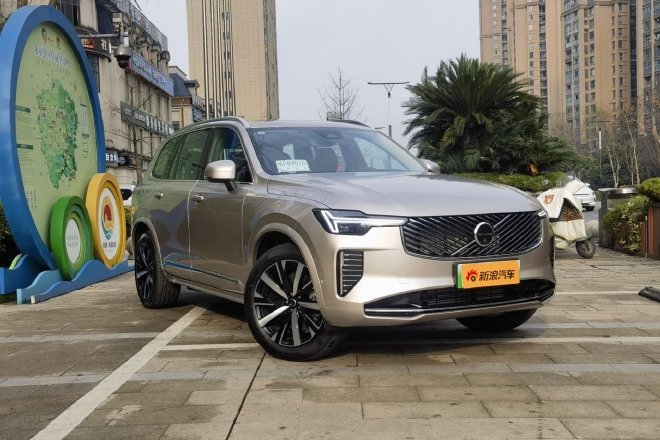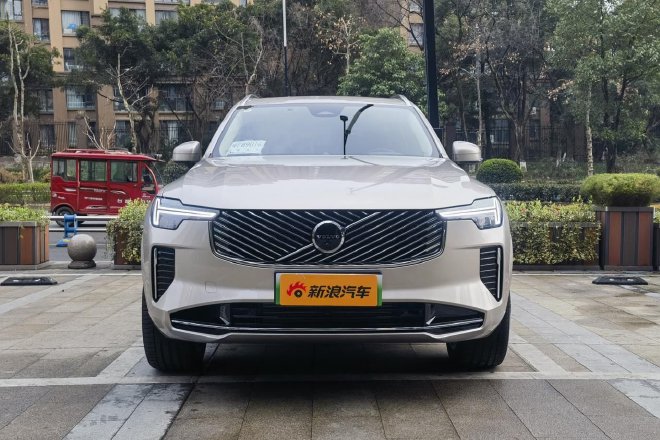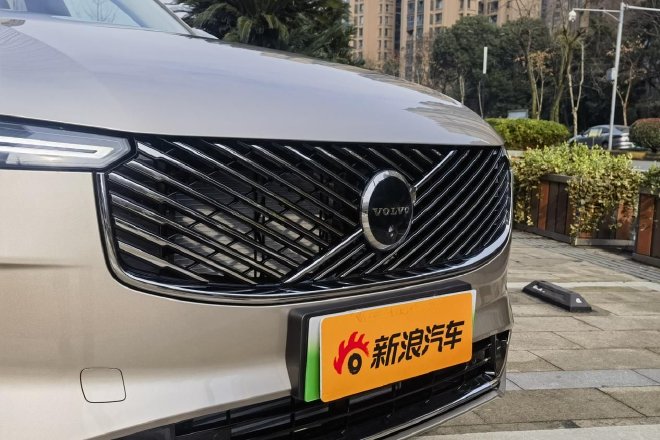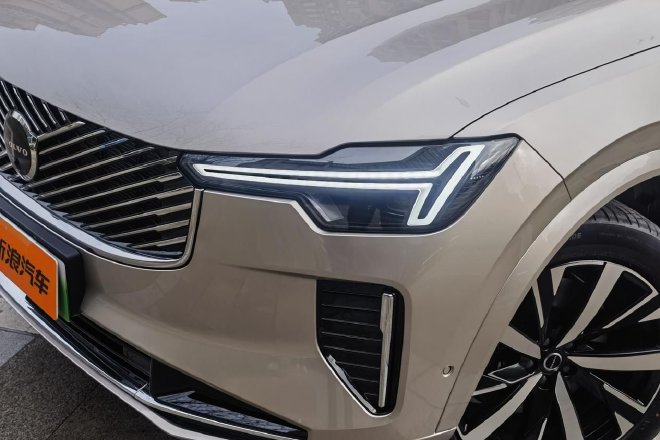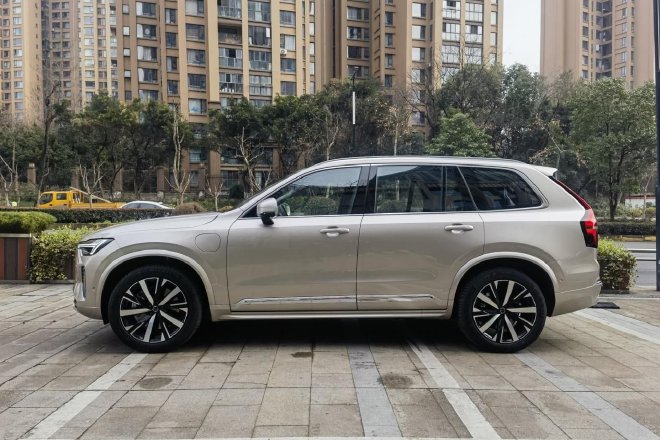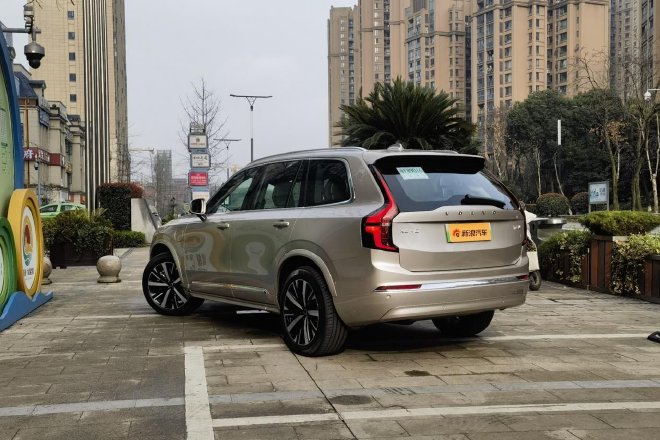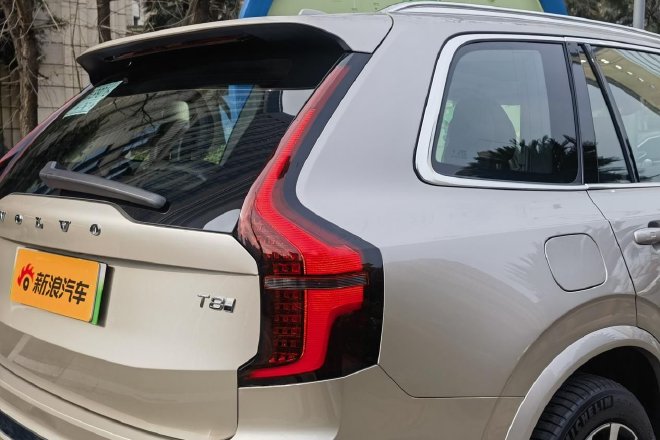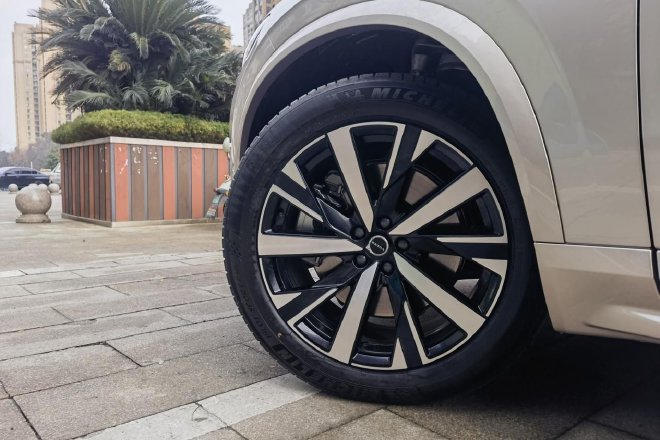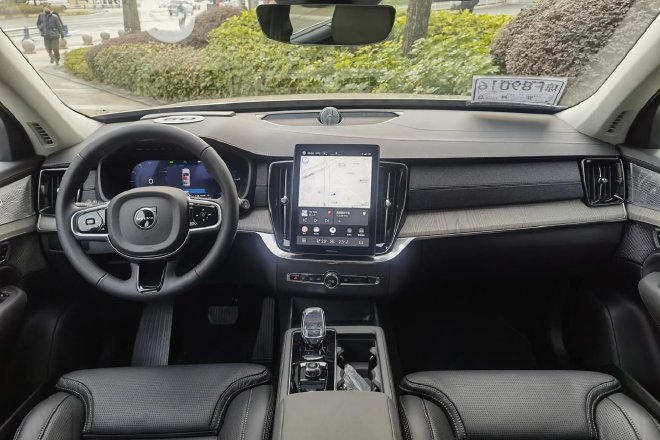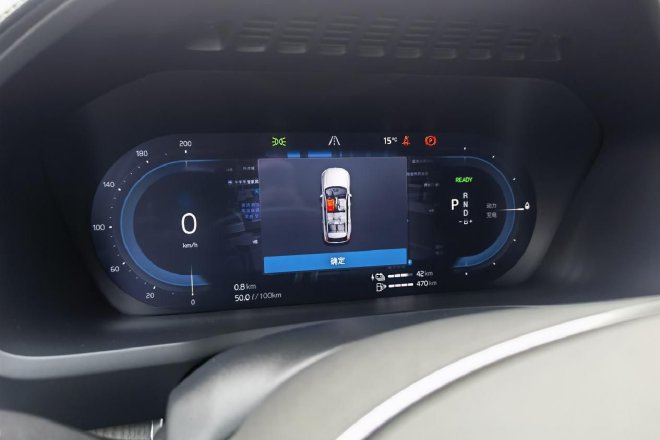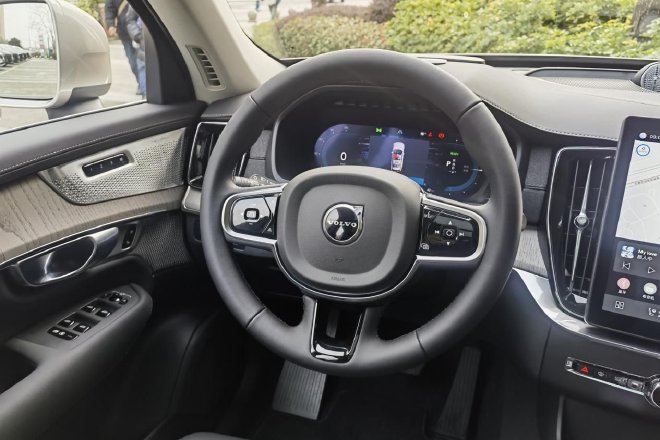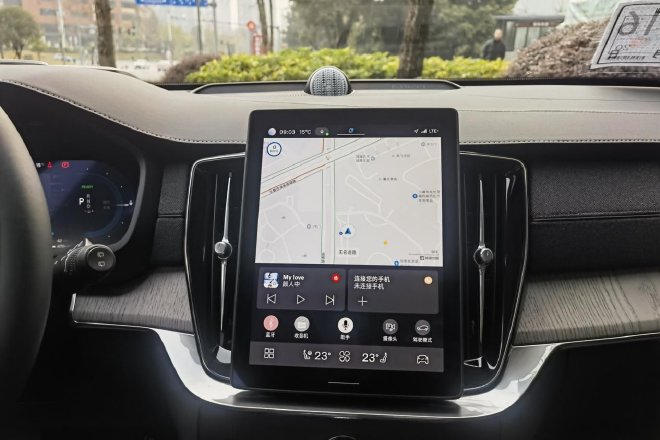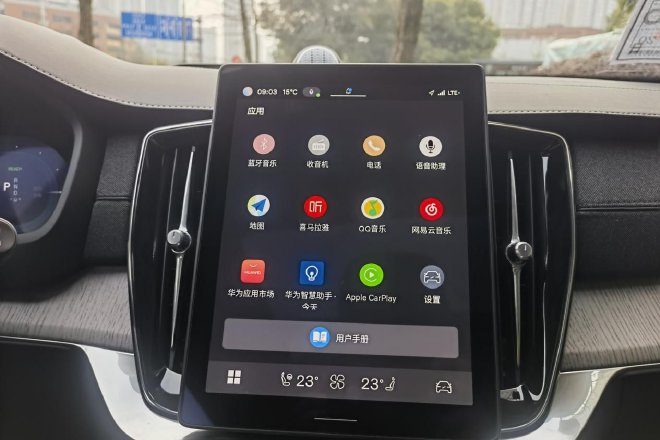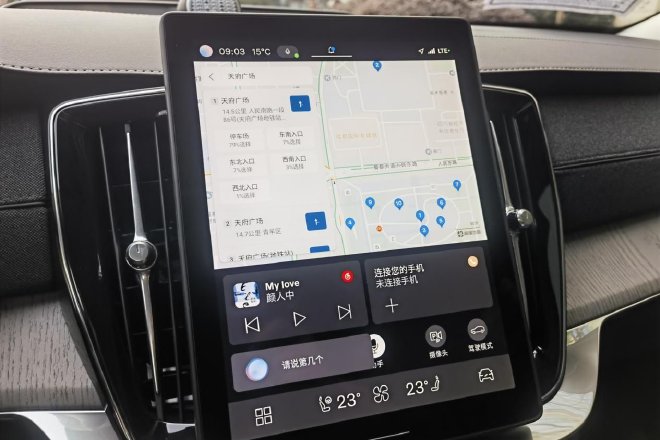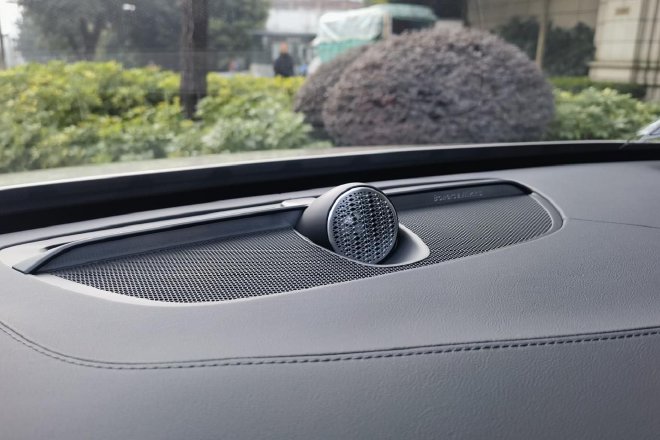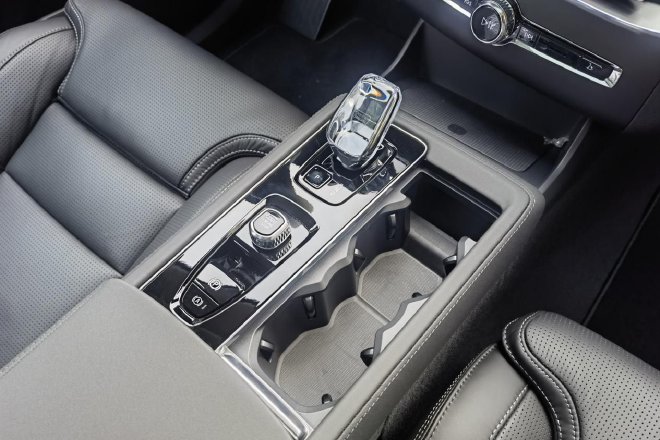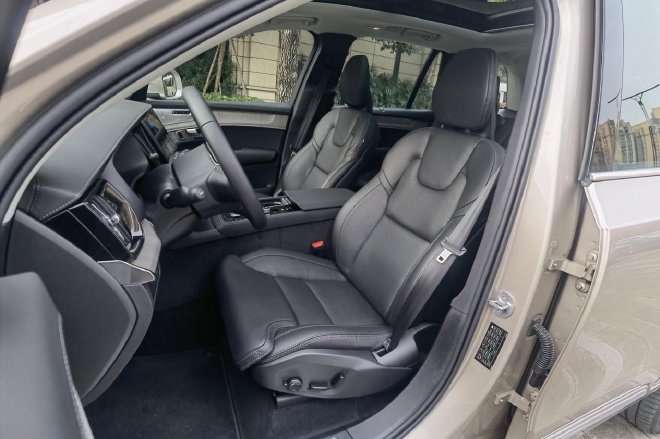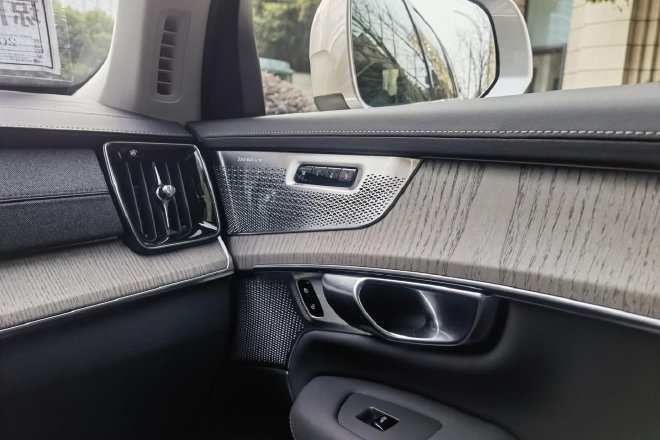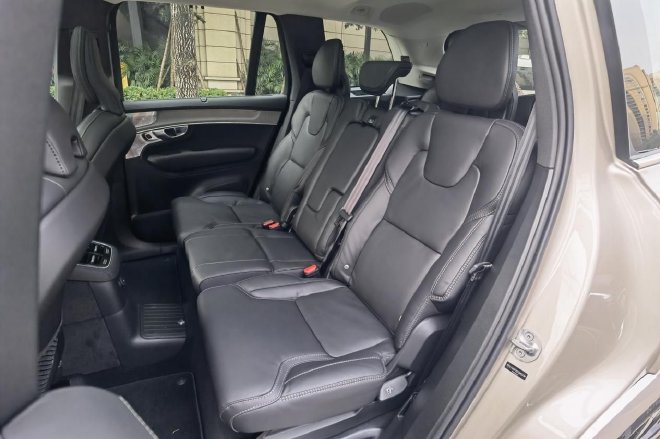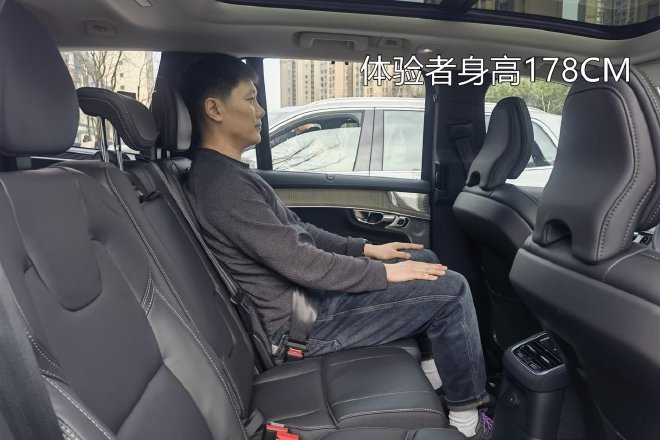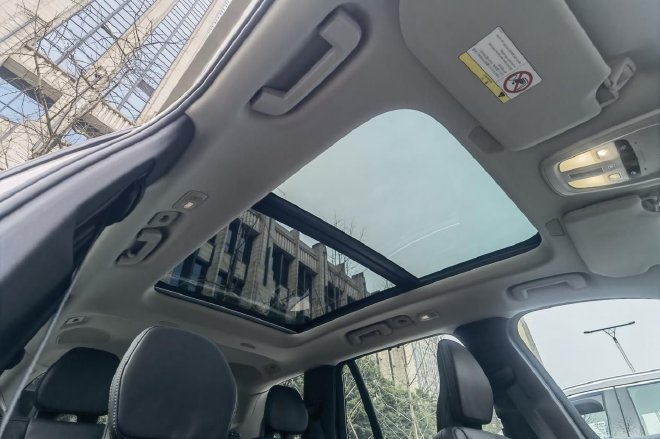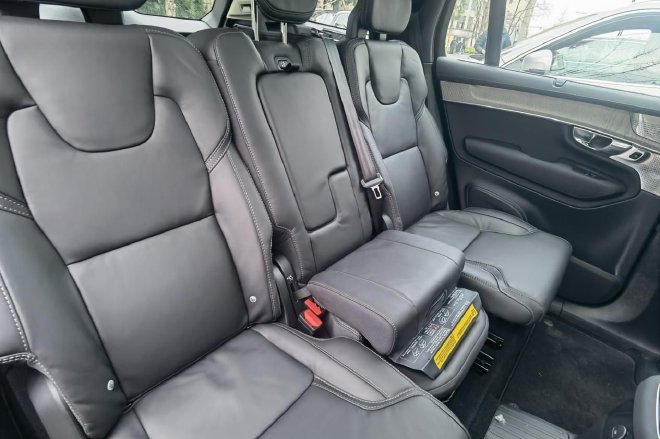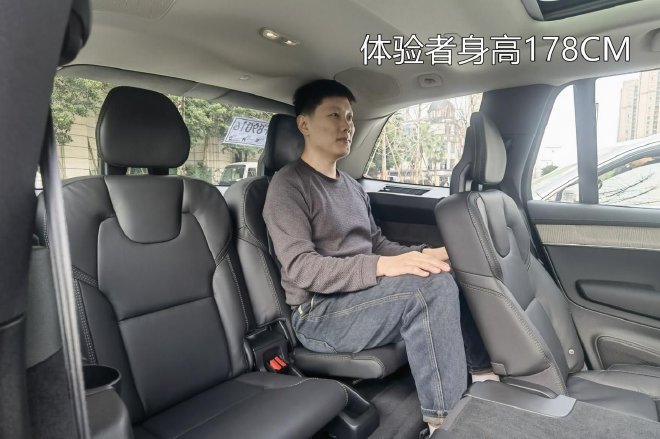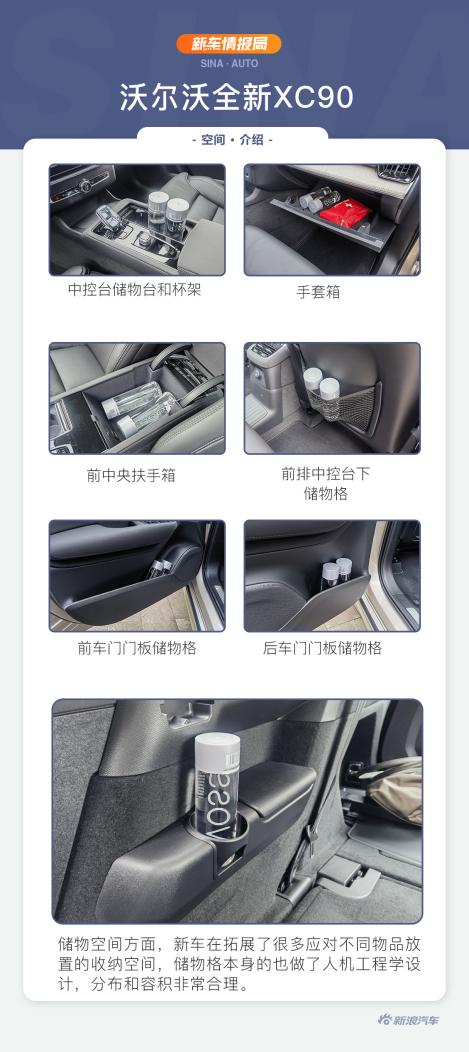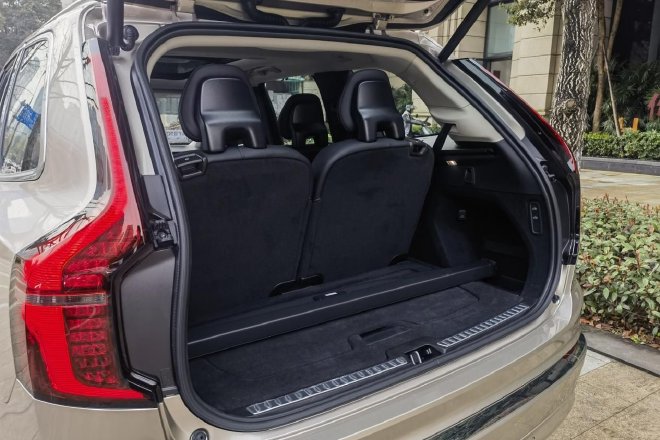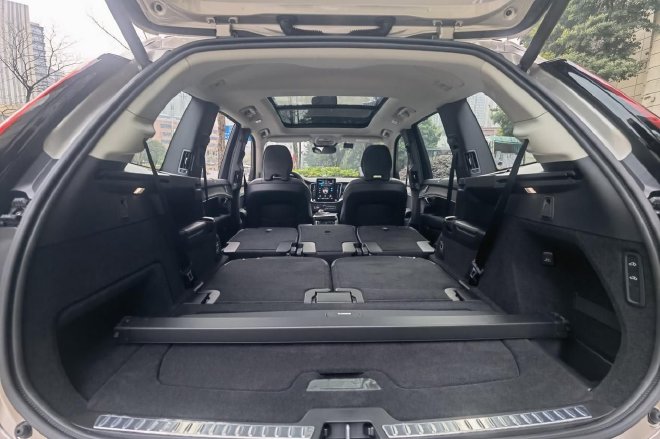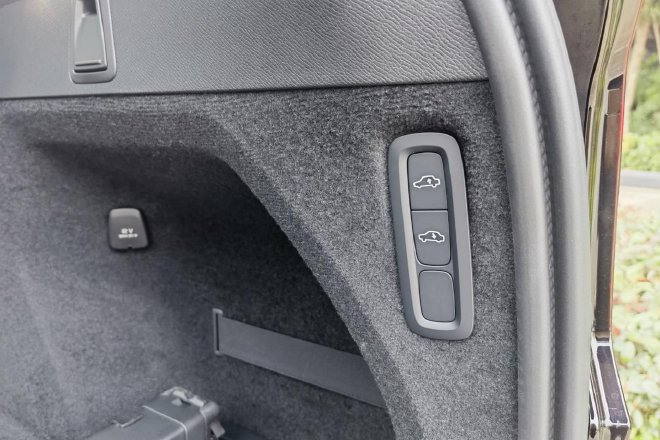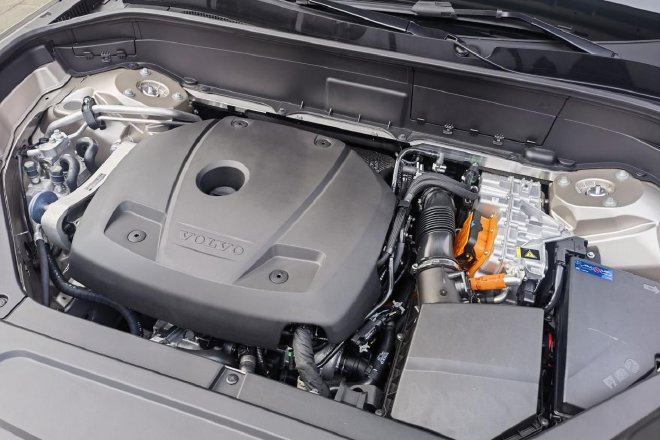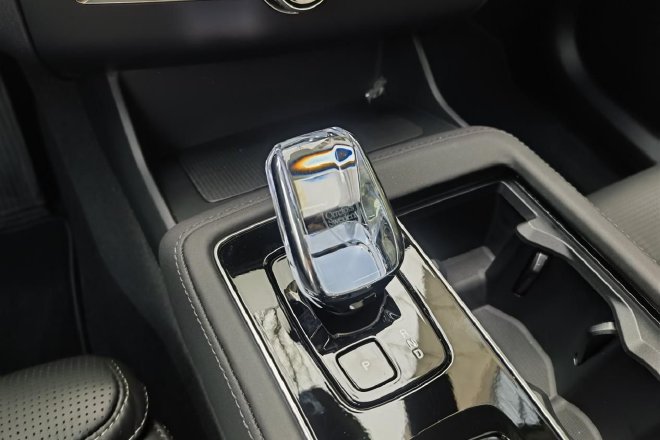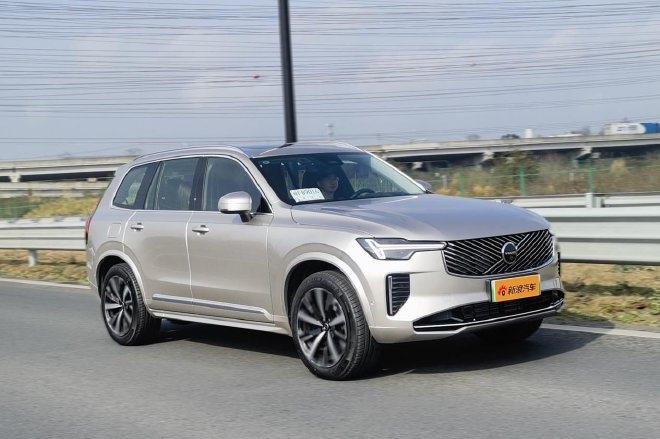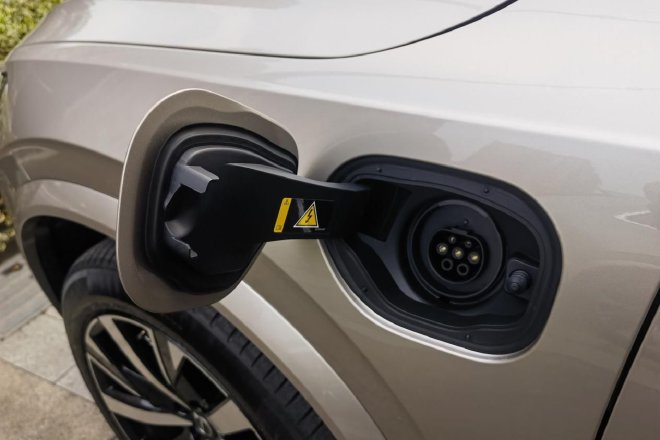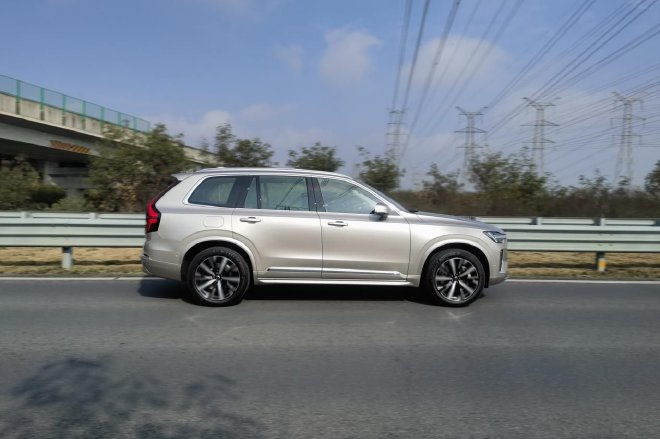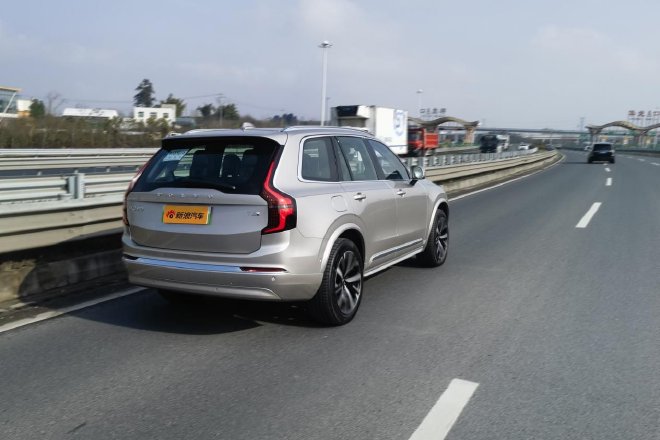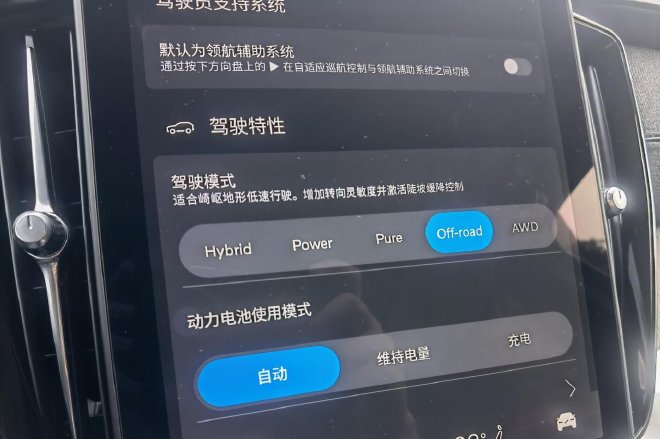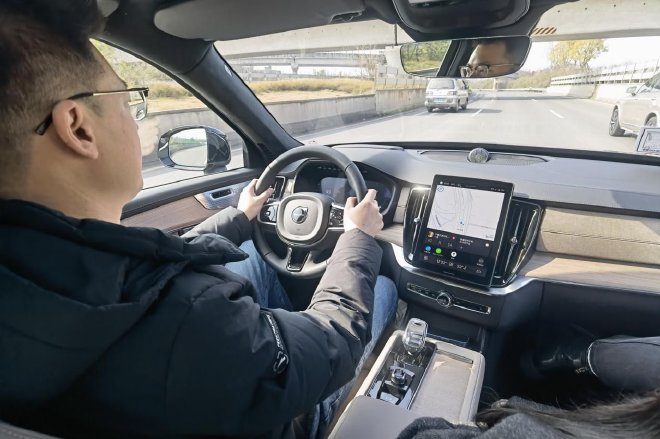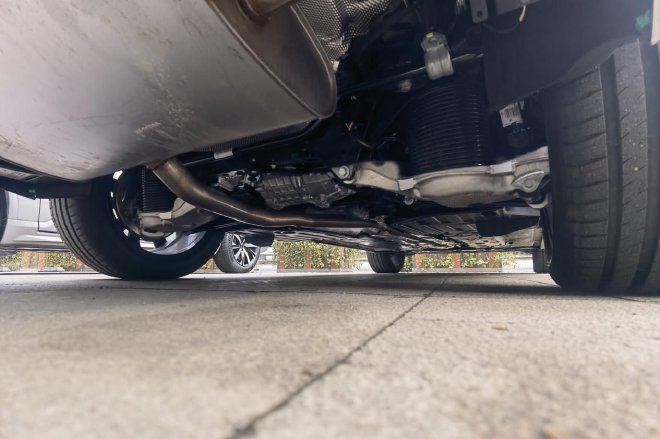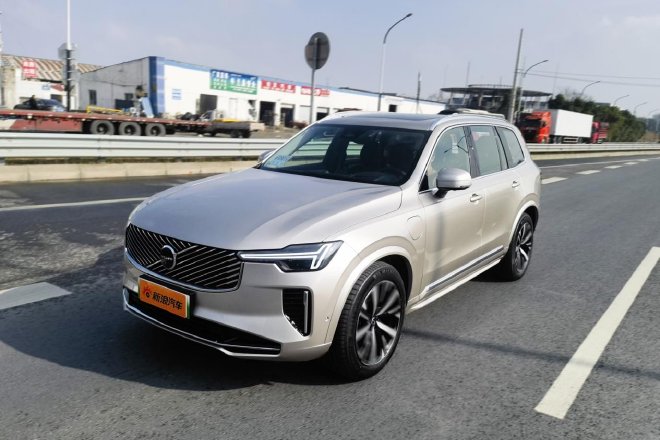Among Volvo’s models, the XC90 stands out both domestically and internationally. It serves as the brand’s flagship. Since its launch in 2002, it has undergone only two traditional updates. Compared to many new cars that change every three to five years, its style remains stable and embodies OLD MONEY. Therefore, Volvo takes great care with any updates, no matter how small. This year marks a significant product year for Volvo. The all-new XC90 will debut at the Shanghai Auto Show. As a key player in its generation, it follows Volvo’s consistent approach to updates. The focus lies on small adjustments in exterior design and enhancements in configuration for a better experience. What changes can we expect? What improvements will enhance the experience? This test drive will reveal all. Exterior: More refined, more traditional as the family flagship.
The model starts with XC, indicating it is a flagship. The number 90 confirms its status. The design reflects changes for the new energy era. The XC90 maintains a strong Nordic style, showcasing familiar Volvo elements. However, the style becomes more streamlined. The attention to detail presents a fresh look. Each design element exhibits impressive artistry and design.
The front of the car remains classic. Compared to the old model, it features a new design with intersecting diagonal lines. This design draws inspiration from the Y-shaped grille of traditional suits. It divides the front into two asymmetrical parts. The logo’s slant integrates seamlessly. This creates a memorable sense of luxury and recognition.
The XC90 retains classic elements. It features Volvo’s iconic seatbelt logo at the front. The logo floats within a transparent design, giving it a premium look. The grille appears more streamlined. The front bumper keeps the corresponding air intake structures on both sides and at the lip area. Chrome trim enhances the design. The overall feel is quite modern.
The classic Thor’s Hammer headlights have evolved. They continue the Volvo family genes. The light source appears futuristic and pure. It draws inspiration from the LED lights of the seatbelt buckle. These lights extend and connect to the grille. The front hood dips down, creating a clean look. The main headlight assembly features a split design. It maintains a minimalist approach. Notably, the new model includes matrix LED lights as standard across the range.
The new car color is forest berry red. The side design, style, and dimensions remain the same as the old XC90. A straight character line runs along the body. The door design features curves, and the narrow wheel arches complement the traditional door handles. This creates a strong family resemblance, appealing to consumers who prefer a refined style.
The rear of the car maintains the XC90’s elegant, streamlined design. It shows no changes. The strong waistline enhances body rigidity. It creates a pyramid-like structure with a narrower top and wider bottom. This visual effect stabilizes the car’s stance. It aligns with Volvo’s consistent luxury design style.
The new “Viking Axe” features split tail lights. The design separates the lights into two parts. The lower part uses a classic C-shaped tail light. It adopts a popular through-type design. The width light strip appears more streamlined. The rear windshield now includes two LED light groups parallel to the D-pillars. This represents Volvo’s latest tail light design language.
The wheel hub features a multi-spoke design. It combines black and mirror silver colors. The tire size is 275/45R22. The vehicle uses Michelin Pilot Sport 4 SUV tires. These tires focus on sporty handling for SUVs. Interior: The design maintains Nordic style. The features continue to evolve.
The new car features a distinct Nordic minimalist style. The interior showcases a continuous air vent and Volvo’s typical neutral tones, creating a cool atmosphere. The carpets and door panel linings use eco-friendly materials. Driftwood and fabric serve as the main materials, ensuring a good feel, quality, and safety. The ambiance is excellent. In terms of technology, the embedded LCD instrument panel and the floating central control screen represent current standard configurations, even if they lack significant breakthroughs.
The full LCD dashboard measures more traditionally and cleanly than current electric vehicles. The UI is simple, with clean fonts and no flashy designs or colors. It displays driving-related information, such as speed, mileage, navigation routes, and real-time driver assistance interfaces. This design enhances the tech feel and links with the vertical central control screen to show navigation and media pages, improving safety while driving.
The new three-spoke multifunction steering wheel retains a classic style. Its lines are smoother and rounder. The design includes buttons for cruise control and multimedia functions on both sides. The layout is reasonable. Subtle background lighting enhances its visual appeal. Even the glossy plastic resists fingerprints.
The center console features an 11.2-inch floating screen. The size increases, and the resolution improves. The car’s internal system upgrades the previous Android design. The new OneHMI system UI also updates its settings. It maintains a zero-level interaction concept, focusing on efficient interaction.
The main interface displays five layers from top to bottom. This layout helps drivers and passengers operate quickly. The notification bar and connectivity status show at the top. The main interface, air conditioning tray, and emergency lights sit at the bottom. The overall look resembles a smartphone interface. OTA technology and connectivity features improve significantly in later applications compared to the current model.
The new car will introduce OTA updates for the Doubao large model. It will also upgrade the voice function. The system will better recognize continuous speech and support wake-word-free operation.
The audio brand remains Bowers & Wilkins. This brand has collaborated for a long time. In the Zhiyuan model and above, it includes all equipment. The audio system features 19 speakers with a power of 1410 watts. The sound unit on the top of the center console still showcases strong design and luxury.
The central armrest area remains simple. It features a wireless charging zone with a ventilated panel. There is also a storage box with a roller cover. The multimedia knob uses elegant crystal and chrome, showcasing strong design. Space: Eco-friendly design, six-seat model debuts.
The ultra-thin curved ergonomic seats in the car come from a collaboration between Volvo and experts from the Karolinska Institute. The design shows only minor upgrades compared to the previous model. It emphasizes a futuristic shape while enhancing comfort for drivers and passengers. The craftsmanship and final presentation are unique. The padding remains firm, typical of Scandinavian cars. However, these seats perform much better for long journeys than overly soft seats.
The cabin material focuses on eco-friendliness. Besides Nappa leather, the XC90 uses sustainable materials made from recycled PET bottles. “Nordico leather” feels and looks like real leather. It is easier to maintain and more environmentally friendly. Its diverse color options enhance its quality.
The new XC90 stands as the flagship model and the largest in its family. It offers flexible seating layouts. Customers can choose from a 2+3 five-seat option or a 2+3+2 seven-seat option. The new 2+2+2 layout is unique in its class. These three seating configurations provide diverse choices. However, we tested the seven-seat version.
The panoramic sunroof brightens the second-row headspace. The front section opens widely. It fills the cabin with light and offers a clear view. However, the sunshade does not block all light.
Our test drive car features independent air conditioning vents on both sides of the B-pillar in the rear. The central console includes storage compartments and power outlets.
The central platform in the second row has a noticeable rise. Passengers in the second row enjoy features like independent air conditioning vents, charging ports, and sunshades. The central seat is particularly interesting. It can fold independently to connect to the third row. It also includes a convertible child safety seat. This design shows a strong focus on safety.
Due to size limitations, the third row seats lack comfort. Getting in and out can be difficult. Headroom and legroom feel cramped. The low and flat seat cushions make long trips uncomfortable. Fortunately, the third row has an independent air conditioning vent, sound system, and storage design. These features help improve passenger comfort.
The new car expands storage space for various items. The storage compartments feature ergonomic designs. Their layout and capacity are very reasonable.
In daily use, the XC90 performs well with its flexible seating layout. In seven-seat mode, the trunk space is average. In five-seat mode, the trunk space remains high. It easily accommodates five passengers for long trips. It is hard to fill it completely.
When you fold down the third and second-row seats, you create a well-organized storage space. The capacity becomes quite impressive.
The air suspension allows one-click lowering of the vehicle height. This feature makes loading heavy items easier. Test drive: The flagship model offers flagship power.
In terms of power, the new XC90 uses the original oil-electric shared platform. It does not make major adjustments to the overall powertrain. The new model offers three power versions. We tested the plug-in hybrid model with the T8 AWD badge. It continues to use a plug-in hybrid system that combines a 2.0T engine and an electric motor. The 2.0T high-power engine delivers 228 kW. The CLTC pure electric range reaches 84 km, while the total range is 1329 km. The 2.0T engine comes in two power levels, B5 and B6, both equipped with a 48V mild hybrid system.
The transmission features an 8-speed automatic gearbox from Aisin. It uses an electronic shift mechanism. The high-end model’s premium Oris crystal gear lever now appears in lower trims. This small part enhances the cabin’s luxury significantly.
The Volvo XC90 clearly targets executive design rather than a model focused on driving. The T8 power system combines the B6 engine with P1 and P4 electric motors. The engine powers the front wheels, while the electric motors drive the rear wheels. This setup creates an all-wheel-drive system. When you open the driving mode selection, you find five options: hybrid, sport, electric, off-road, and full-time four-wheel drive.
As a plug-in hybrid, it has an electric hold mode and a charging mode. The plug-in hybrid model only supports regular speed charging. It does not support fast charging.
In daily driving, this large vehicle meets most urban traffic needs using only pure electric mode. The engine rarely works alongside the motor. The throttle response during startup feels just right with the motor’s support. The vibrations transmitted to the driver are minimal. It feels like an electric vehicle. The quiet cabin enhances the experience. Stable power delivery is its expected performance.
When you floor the accelerator to overtake, the electric motor responds first. The engine follows to provide additional power. This seamless power delivery inspires confidence during highway overtakes. Even with full throttle, the car maintains smoothness. The massive torque does not feel overly aggressive. This vehicle prioritizes comfort over sportiness.
In this mode, the chassis lowers. This reduces the vehicle’s center of gravity and enhances support. The engine remains ready to respond quickly to throttle commands. Power response improves, but the engine often runs at higher RPMs, affecting the feel. In Off Road mode, the suspension raises to its maximum for better clearance. Most drivers don’t need complex choices or fixed driving modes. The Hybrid mode adapts well for urban driving most of the time.
The steering effort is very linear. It does not follow a precise path. However, the new XC90 performs well in directionality, angle gain, and steering response speed. It provides agility that seems unmatched for its size. The wheels give the driver rich road and directional feedback. This design caters to drivers who prefer comfort over strong control.
The new XC90 features a front double wishbone and a rear multi-link independent suspension. Models without active adaptive chassis and air suspension come with FSD variable damping shocks as standard. The overall suspension tuning leans towards a sporty firmness. This suspension system handles vibrations effectively. It prevents excessive rebound and vibrations from entering the cabin after bumps. Daily driving performance remains good. On rough roads, it manages continuous small bumps smoothly. It also quickly suppresses excessive movement during larger jumps, keeping the vehicle stable.
At this level, the luxury vehicle delivers impressive NVH performance. The new model prioritizes quietness. Officially, seven NVH upgrades reduce noise by an additional 2dB. During low-speed driving, wind noise remains minimal. The chassis noise is well isolated. However, this is a large vehicle with a significant frontal area. At high speeds, some wind noise does come from the front roof. Editor’s summary: The Volvo XC90 targets a wealthier demographic. This market has less intense competition among joint venture luxury SUV brands. Vehicles in this segment need technology enhancements, but they also require brand heritage and image. When a new model launches, it should feel fresh, but upgrades must follow a steady pace. The new XC90 embodies this approach. It represents a significant generational update, yet its changes remain subtle. This unique character aligns with Volvo’s brand identity. The essence of the new XC90 lies in the unseen aspects. It features a high-strength body structure and excellent active safety. Its design avoids extravagance, appealing to today’s practical and understated consumers. It remains the top choice for those who reject trends and prioritize family safety. This is the unique charm of Volvo.

